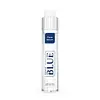What's inside
What's inside
 Key Ingredients
Key Ingredients

 Benefits
Benefits

 Concerns
Concerns

No concerns
 Ingredients Side-by-side
Ingredients Side-by-side

Water
Skin ConditioningAloe Barbadensis Leaf Juice
Skin ConditioningSd Alcohol 40
AstringentNicotinamide Adenine Dinucleotide
Skin ConditioningGlycerin
HumectantNicotinamide Mononucleotide
AntioxidantNiacinamide Riboside Chloride
AntioxidantSorbitan Sesquioleate
EmulsifyingCetearyl Alcohol
EmollientGlyceryl Stearate
EmollientApocynin
Skin ConditioningPropylene Glycol
HumectantCarbomer
Emulsion StabilisingFucus Vesiculosus Extract
EmollientSodium Hyaluronate
HumectantCaprylic/Capric Triglyceride
MaskingTocopherol
AntioxidantThioctic Acid
AntioxidantGlutathione
Tocopheryl Acetate
AntioxidantCI 52015
Xanthan Gum
EmulsifyingTriethanolamine
BufferingRosmarinus Officinalis Leaf Oil
MaskingLecithin
EmollientResveratrol
AntioxidantCitric Acid
BufferingPhenoxyethanol
PreservativeEthylhexylglycerin
Skin ConditioningWater, Aloe Barbadensis Leaf Juice, Sd Alcohol 40, Nicotinamide Adenine Dinucleotide, Glycerin, Nicotinamide Mononucleotide, Niacinamide Riboside Chloride, Sorbitan Sesquioleate, Cetearyl Alcohol, Glyceryl Stearate, Apocynin, Propylene Glycol, Carbomer, Fucus Vesiculosus Extract, Sodium Hyaluronate, Caprylic/Capric Triglyceride, Tocopherol, Thioctic Acid, Glutathione, Tocopheryl Acetate, CI 52015, Xanthan Gum, Triethanolamine, Rosmarinus Officinalis Leaf Oil, Lecithin, Resveratrol, Citric Acid, Phenoxyethanol, Ethylhexylglycerin
Water
Skin ConditioningTetrahexyldecyl Ascorbate
AntioxidantLactobacillus/Kelp Ferment Filtrate
Skin ConditioningSodium PCA
HumectantMagnesium Ascorbyl Phosphate
AntioxidantCarnosine
Skin ConditioningCarnitine
CleansingNiacinamide
SmoothingTetrahydrodiferuloylmethane
AntioxidantTetrahydrodemethoxydiferuloylmethane
AntioxidantTetrahydrobisdemethoxydiferuloylmethane
AntioxidantFerulic Acid
AntimicrobialHesperidin Methyl Chalcone
AntioxidantAscorbyl Palmitate
AntioxidantHyaluronic Acid
HumectantCamellia Sinensis Leaf Extract
AntimicrobialPhloretin
AntioxidantAloe Barbadensis Extract
Skin ConditioningGlutathione
Dimethylaminoethanol Tartrate
EmollientUbiquinone
AntioxidantResveratrol
AntioxidantCentella Asiatica Extract
CleansingLycopene
AntioxidantThioctic Acid
AntioxidantSuperoxide Dismutase
AntioxidantCatalase
Skin ConditioningSh-Oligopeptide-77
Skin ConditioningCitric Acid
BufferingCaprylyl Glycol
EmollientPhenoxyethanol
PreservativeSorbic Acid
PreservativeWater, Tetrahexyldecyl Ascorbate, Lactobacillus/Kelp Ferment Filtrate, Sodium PCA, Magnesium Ascorbyl Phosphate, Carnosine, Carnitine, Niacinamide, Tetrahydrodiferuloylmethane, Tetrahydrodemethoxydiferuloylmethane, Tetrahydrobisdemethoxydiferuloylmethane, Ferulic Acid, Hesperidin Methyl Chalcone, Ascorbyl Palmitate, Hyaluronic Acid, Camellia Sinensis Leaf Extract, Phloretin, Aloe Barbadensis Extract, Glutathione, Dimethylaminoethanol Tartrate, Ubiquinone, Resveratrol, Centella Asiatica Extract, Lycopene, Thioctic Acid, Superoxide Dismutase, Catalase, Sh-Oligopeptide-77, Citric Acid, Caprylyl Glycol, Phenoxyethanol, Sorbic Acid
Ingredients Explained
These ingredients are found in both products.
Ingredients higher up in an ingredient list are typically present in a larger amount.
Citric Acid is an alpha hydroxy acid (AHA) naturally found in citrus fruits like oranges, lemons, and limes.
Like other AHAs, citric acid can exfoliate skin by breaking down the bonds that hold dead skin cells together. This helps reveal smoother and brighter skin underneath.
However, this exfoliating effect only happens at high concentrations (20%) which can be hard to find in cosmetic products.
Due to this, citric acid is usually included in small amounts as a pH adjuster. This helps keep products slightly more acidic and compatible with skin's natural pH.
In skincare formulas, citric acid can:
While it can provide some skin benefits, research shows lactic acid and glycolic acid are generally more effective and less irritating exfoliants.
Most citric acid used in skincare today is made by fermenting sugars (usually from molasses). This synthetic version is identical to the natural citrus form but easier to stabilize and use in formulations.
Read more about some other popular AHA's here:
Learn more about Citric AcidGlutathione is an antioxidant naturally found in our bodies. It is made up of three amino acids: glycine, cysteine, and glutamic acid.
As an antioxidant, it prevents oxidative damage to parts of our cell.
While glutathione is said to help with fading dark spots, the results from research are inconclusive. Further studies are needed. With that said, gluthatione has been shown to protect our skin from UV-B induced damage.
This ingredient is naturally occurring in plants, animals, fungi, and some bacteria.
Learn more about GlutathionePhenoxyethanol is a preservative that has germicide, antimicrobial, and aromatic properties. Studies show that phenoxyethanol can prevent microbial growth. By itself, it has a scent that is similar to that of a rose.
It's often used in formulations along with Caprylyl Glycol to preserve the shelf life of products.
Resveratrol is a famous emerging antioxidant. It is a good alternative for sensitive skin types who cannot tolerate retinoids.
This antioxidant is most famous for it's anti-aging benefits. Studies show it combats the signs of aging by:
Besides anti-aging, this ingredient also helps with skin brightening and soothing.
The most effective forms of resveratrol are isobutyrate and butyrate. These have the strongest effect on increasing A1 collagen and reducing inflammation.
A note on it being a retinoid alternative:
Despite it's amazing skin benefits, it is not a replacement for retinoids. However, it is recommended for people with sensitive skin or intolerance to retinoids.
Resveratrol is naturally found in grapes, peanuts, and berries.
Learn more about ResveratrolThioctic Acid is an enzyme and antioxidant. A more common name for this is Alpha Lipoic Acid.
Alpha Lipoic Acid can be naturally found in the mitochondria of every cell.
Antioxidants help fight free-radicals. Free-radicals are molecules that may damage your skin cells. The antioxidants in Alpha Lipoic Acid have been shown to fight damage from cigarette smoke.
Studies also show Alpha Lipoic Acid plays a role in wound healing.
Thioctic Acid will break down when exposed to sunlight.
Many foods contain thioctic acid, including tomato, brussel sprouts, spinach, and broccoli.
Learn more about Thioctic AcidWater. It's the most common cosmetic ingredient of all. You'll usually see it at the top of ingredient lists, meaning that it makes up the largest part of the product.
So why is it so popular? Water most often acts as a solvent - this means that it helps dissolve other ingredients into the formulation.
You'll also recognize water as that liquid we all need to stay alive. If you see this, drink a glass of water. Stay hydrated!
Learn more about Water